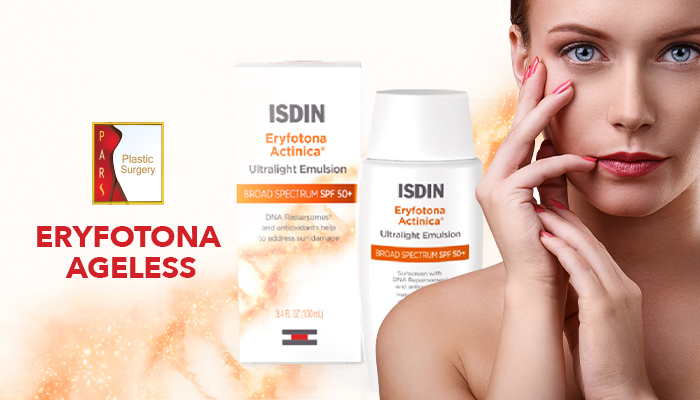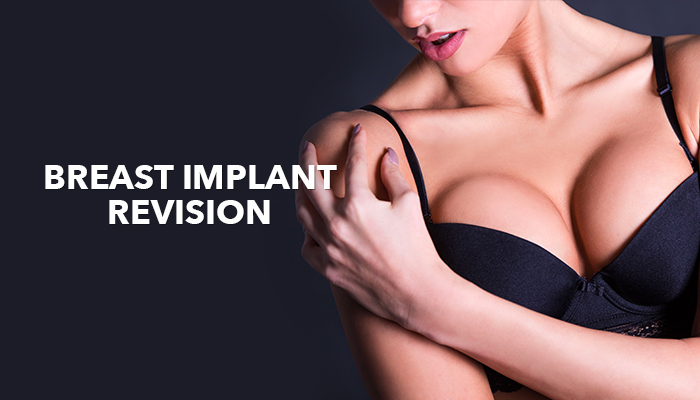
Breast augmentation medically called “augmentation mammoplasty,” is a surgical operation performed to enlarge and improve the shape of a woman’s breasts. This plastic surgery is done for a number of reasons:
– To enhance the body contour of a woman when she feels that her breast size is too small, which can improve her self-image and self-confidence.
– To correct changes or loss in breast volume after pregnancy or nursing.
– To balance breast size (cup size) when one breast is smaller than the other and the woman wants to achieve breast symmetry.
– To restore breast texture and shape in cases of partial or total loss of breasts for various conditions like treated breast cancer, congenital defects of the chest wall, and others.
-To replace previous breast implants.
Who is the ideal candidate for breast augmentation?
Ideal candidates for breast augmentation are women with fully developed breasts (at least 18 years of age, according to the FDA) who are physically healthy and psycho-emotionally stable, and who have realistic expectations (and at least one of the conditions listed above). It’s important that the patient, after an explanation from her plastic surgeon, understands the limits and advantages provided by this plastic surgery.
When is breast augmentation contraindicated?
Breast augmentation is contraindicated in women with a diagnosis of breast cancer, or who are receiving treatment (like chemotherapy); however, this surgery may be performed after cancer has been cured. Patients with a diagnosis of pre-malignant breast diseases or mental illness, or who are currently pregnant or nursing, should also wait to undergo the surgery.
Patients who have conditions that interfere with blood clotting or wound healing, or who have a low blood supply to the breast as a consequence of previous surgeries or radiation, may be at greater risk of complications and poor surgical outcome.
No procedure in the filed of plastic surgery has been the subject of greater scrutiny or controversy than breast augmentation. It is estimated that more than 2 million American women (1% of the female adult population) have breast implants. Augmentation mammoplasty is among the most common cosmetic surgeries in the United States, ranking second. The annual amount of breast augmentations has grown quickly in the last years; it is believed that there has been a 676% increase from 1992 to 2004.
Breast augmentation costs can vary because of many factors, but its average cost is $3,708 (obtained from 2014 statistics from the American Society of Plastic Surgeons). The patient should consider that this average cost does not include extra fees, such as anesthesia, room facilities, and others. Also, most health insurance policies don’t cover plastic surgeries.
What is the general procedure?
During the first visit to the plastic surgeon, a complete medical record should be provided (including current and previous diseases and allergies), and the patient should discuss with the surgeon why she wants breast augmentation surgery, informing the surgeon of her expectations and the desired outcome.
In this particular case, the plastic surgeon should be made aware of the patient’s family history of breast cancer, and the results of any mammograms or previous biopsies. The surgeon will evaluate general health status and will examine and measure the breasts, including breast size and shape, conditions of the breast skin (like elasticity), and the shape, size, and placement of the nipples and areolas. The plastic surgeon will take photographs to compare with post-operation results. Surgery can last between 1 and 3 hours.
The patient should take blood tests, adjust current medications, stop smoking, and avoid taking aspirin and other anti-inflammatory drugs (to avoid bleeding) for two weeks or more before the surgery.
The doctor will recommend the best type of anesthesia for each patient. The method of implant selection and size and the surgical technique will depend on the patient’s preferences and anatomy, and the recommendations of the plastic surgeon. Patients with sagging skin or stretch marks in the breast may require additional procedures, like a breast lift; this procedure will improve the shape and position of the nipple-areola complex and remove all loose skin.
Incisions are made to keep scars as inconspicuous as possible. There are several types of incisions, but usually the plastic surgeon does them in the breast crest, around the areola, or even in the armpit. Each location has its advantages and disadvantages; it is selected according to the plastic surgeon’s experience and where the implant will be placed (sub-glandular, sub-pectoral, or “dual-plane” position).
– Inframammary (IFM): This type of incision is made under the breast, which allows full access to the breast tissue to place the breast implant devices. This incision is preferred for patients with a crease that may cover the scar, particularly when it is placed slightly above the crease on the breast surface; however, this approach may be suboptimal when the integrity of the inframammary crease ligament has been compromised. This is the incision recommended for inserting implants made of silicone gel because larger incisions are required for these implants.
– Periareolar: In this case an incision is made along the areolar periphery (around the medial-half or inferior-half of the areola’s circumference), and in general, provides excellent access to all portions of the breast, which facilitates review procedures. This incision is recommended when the plastic surgeon will perform a mastopexy (breast lift) and a mammoplasty procedure at the same time; aesthetically, it is preferred because it usually tends to heal with minimal scarring (approximately 5cm) and scars are less visible. Silicone-gel implants can be difficult to place with this incision because it is very short.
Furthermore, the periareolar incision produces a greater incidence of capsular contracture and severs the milk ducts and the nerves to the nipple, which causes functional problems postoperatively that impede breastfeeding.
– Transaxillary: This is a type of incision made in the axilla; after that, the plastic surgeon goes medially to get to the breast tissue, thus allowing the placement of implants without leaving visible scars upon the breast; however, asymmetry in the lower part of the breast is more frequent with this incision. The disadvantage of this type of incision is that during a surgical revision, an inframmamary or periareolar incision should be made, subsequently leaving two scars.
– Transumbilical: This type of incision is less common and consists of inserting the implant through an incision made in the navel (“transumbilical breast augmentation,” or TUBA), so the plastic surgeon should enlarge the incision superiorly to attain the breast tissue. This surgical approach enables placing the ammary implants without leaving visible scars in the breast, but it also makes the technique more difficult. This procedure is done without the visual assistance of the endoscope and is not appropriate for placing silicone gel implants due to potential damage in the elastomeric silicone shell.
– Transabdominal: This type of incision is very similar to the TUBA procedure mentioned above, but in this case, the patient undergoes a breast implant surgery and an abdominoplasty at the same time, so the plastic surgeon uses the same abdominal incisions.
Breast implants are manufactured in different shapes, sizes, and textured surfaces. The history of augmentation mammoplasty reflects the search for the ideal implantable material, commencing with 19th-century attempts to transplant lipomas into breast defects and followed by the modern era of polymer-based devices. The modern mammary prosthesis is actually a mixture of polymers comprised mainly of polydimethylsiloxane that can exist in the form of a solid, liquid, or gel.
Only 2 types of implants are approved by the FDA to be used for breast augmentation in the United States: saline-filled implants and silicone gel-filled implants.
– Saline-filled implants: This kind of implant has an outer shell of silicone but contains a saline solution. In some cases the implant is pre-filled, but sometimes the plastic surgeon must fill it during the operation. This implant provides a uniform shape, firmness, and feeling. The FDA approved them for use in women older than 18 years of age, and at any age if they are to be used for breast reconstruction surgery. If the implant leaks, it will collapse, and the saline solution will be absorbed and naturally expelled by the body.
– Silicone gel-filled implants: In this case the implant has a silicone outer shell and it too is filled with silicone gel, but the gel feels more similar to natural breast tissue. These are approved for use in women older than 22 years of age for breast augmentation, but in the case of breast reconstruction surgery, they may be used at any age. If the implant leaks, the gel may remain within the implant shell. A broken implant filled with silicone gel will not collapse. They are also recommended for subsequent surgeries; in other words, this kind of implant is used during revision surgeries to improve or correct any defect in the results of a previous surgery.
There are other types of breast implants, but they are not approved by the FDA in the United States. Breast implants are not lifetime devices, so it is likely that the patient will have to undergo surgery to remove or replace them.
If a patient does not want to use breast implants, there are more natural procedures available, such as fat transfer breast augmentation, which uses liposuction to take fat from other parts of the patient’s body and inject it into her breasts. This technique is the perfect option for women who desire a small increase in breast size and prefer more natural results.
Where is the breast implant inserted and placed?
After the incision, the plastic surgeon makes a pocket so that he can place the implant; it can be:
– Sub-glandular: In this technique, the implant is placed in the retro-mammary space (the space located between the pectoralis muscle and breast tissue), similar to the usual location of normal breast tissue, which helps to achieve a more natural result. In patients with a thin pectoral muscle, if the implant gets a ripple or wrinkle while it is inserted, it can be seen on the surface. Likewise, using this method has a higher rate of capsular contracture.
– Sub-fascial: In this case, the implant is placed under the pectoralis muscle; it is a modification of the sub-glandular position. Some surgeons report that the muscle provides more protection, according to the type of implant; this position makes it easier to maintain the implant where it was placed.
– Sub-pectoral (“dual-plane”): In this method, the implant is placed under the pectoralis muscle, and may be performed with a partial dissection of the sub-glandular tissue. When this method is performed, the upper part of the implant will be under the pectoralis muscle and the lower part of it under the glandular tissue.
– Sub-muscular: In this case, the implant is placed under the pectoralis muscle, but the plastic surgeon is careful to preserve the inferior insertion of it.
What should the patient do for postoperative care?
Immediately after surgery, the patient will be placed into a recovery area to be closely monitored. The breasts will be wrapped in gauze dressings and an elastic bandage or support bra which will minimize swelling, minimize movement of the breasts, and support the breasts as they heal. Generally, patients can go home after a few hours. Oral medications for pain (analgesics or painkillers) and antibiotics will be used immediately after surgery. Once the bandages are removed, a specialized surgical bra will need to be worn for several weeks. The patient will receive specific instructions about post-operative care and when to follow up with her plastic surgeon. The patient must be sure to follow all of the instructions carefully.
The patient should rest and should not drive for weeks. After a post-surgical period of 24 to 48 hours, the patient can experience soreness and swelling for weeks. Depending on the level of the woman’s daily physical activity, she may resume her normal activities one week after the procedure. Patients who underwent submuscular implantation usually have a longer postoperative convalescence period, and they also tend to experience more pain, due to the healing process of the muscles.
The patient should avoid strenuous physical activity for at least 6 weeks; during this time, surgical scars have usually completely healed.
If the plastic surgeon uses silicone gel-filled implants, it is recommended by the FDA to give an MRI screening, looking for silent rupture; this should be done 3 years after the surgery and at least every 2 years after that. Changes in the woman’s body—including pregnancy, weight loss, and menopause—can change the results of the surgery.
What are the risks of breast augmentation?
The most frequent complications and adverse outcomes experienced by breast implant patients include capsular contracture, a need of new surgeries, and, in other cases, implant removal (with or without replacement). The less frequent complications are implants breaking, leaking, or wrinkling, in addition to asymmetry, scarring, pain, bleeding, and infection. Patients can also present changes in nipple or breast sensation. In addition, women with breast implants may have a very low but still increased likelihood of being diagnosed with anaplastic large cell lymphoma (ALCL).
Dr. Amjadi MD, DDS, FACS
Certified by the American Board of Plastic Surgeons
915 Gessner Rd #870
Houston, TX 77024
713-465-6198













